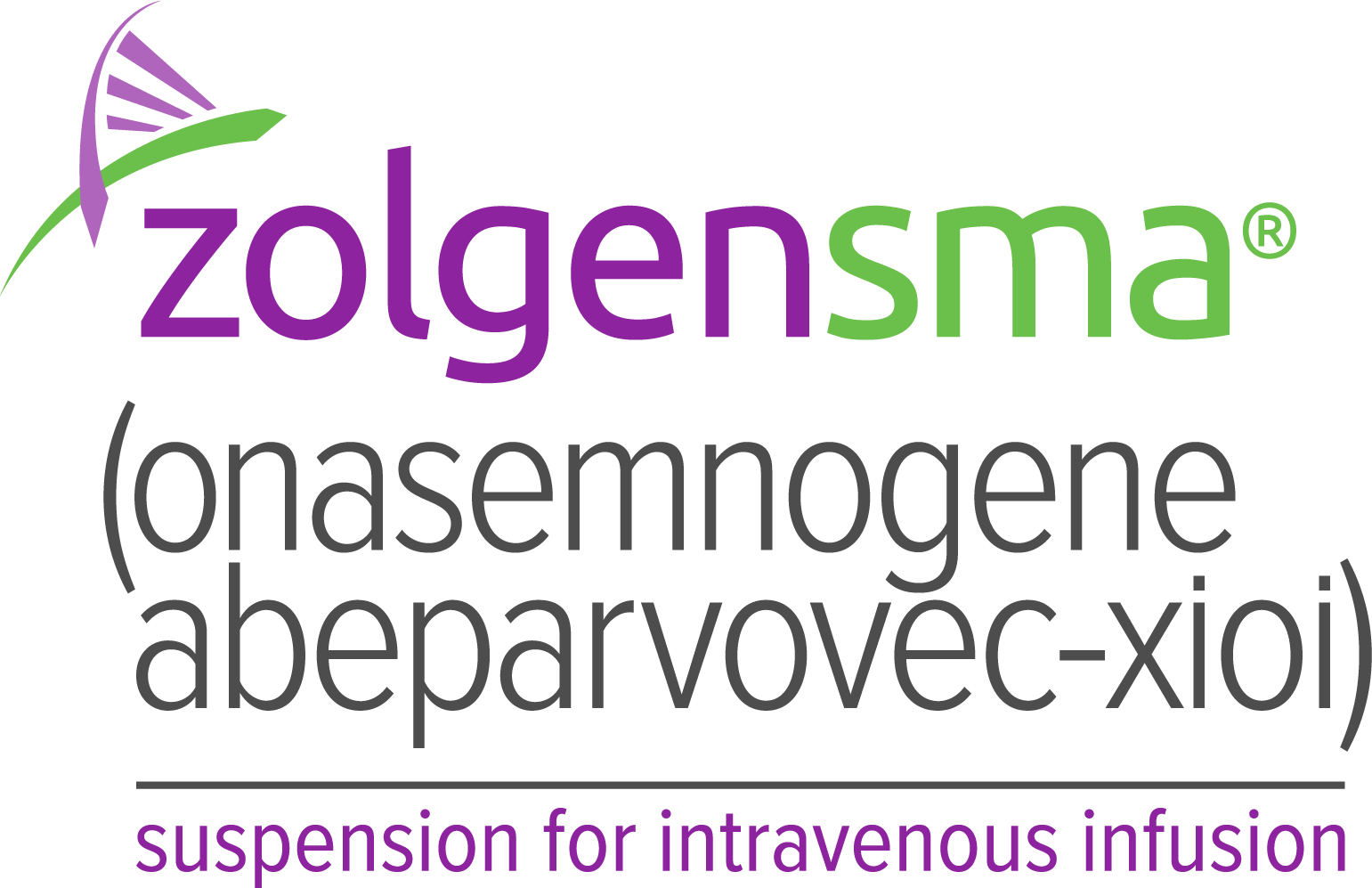Diagnosis and treatment
Early diagnosis and treatment can stop disease progression1
Treatment for spinal muscular atrophy (SMA) has undergone a major paradigm shift. Previously, SMA care focused on management; today, with disease-modifying treatment options, patients can see significant improvement over the natural history.1,2
Without treatment, SMA Type 1 has historically been a leading cause of infant death, with a life expectancy of under 2 years. Initiating treatment early—even before the appearance of clinical signs—may lead to better patient outcomes, as SMA is progressive and loss of motor neurons is irreversible.1,2
Now implemented in 50 states, and Washington, D.C., newborn screening for SMA captures 100% of births in the US3
As of January 2, 2024.3
Newborn screening enables identification of patients with SMA before signs appear. With a few drops of blood from a newborn’s heel, the test screens for multiple genetic and metabolic disorders. Early detection, diagnosis, and intervention through screening can prevent death or disability.2,4

For the latest updates, visit curesma.org/newborn-screening-for-sma
Path to diagnosis
There are 3 ways to identify SMA:
- Genetic testing: Newborn screening and other genetic testing options are the standard for SMA diagnosis5,6
- Identifying signs: If a healthcare professional recognizes the signs of SMA, they should refer the patient to a neuromuscular specialist immediately. In states where SMA is not included in newborn screening tests or in older infants born before screening implementation, vigilance is essential1,6
- Prenatal and carrier testing: Families with a history of SMA or carriers for the SMN1 mutation may consider testing for SMA in utero. Prenatal testing and screening can help families prepare for treatment as early as possible, and genetic counselors can help them navigate the current landscape of SMA treatment6
After talking with a genetic counselor and understanding more about the disease… we were able to take steps before [our daughter] was born to ensure she got treatment as fast as possible.”
Emily, SMA caregiver
Early treatment is essential no matter how SMA is identified.1
States with newborn screening6
Once SMA has been identified, confirm a diagnosis as soon as possible with genetic testing. Don’t wait, refer urgently to a specialist while results are pending
States without newborn screening2,6
SMA is identified through the different signs or prenatal screening
A genetic test is performed to confirm a diagnosis of SMA
Refer patients to a treatment center or neuromuscular specialist with urgency. Early treatment can improve patient outcomes
The Novartis Gene Therapies Laboratory Testing Program can support in assisting genetic testing. For more information, please contact your Novartis Gene Therapies Regional Account Associate Director or call the OneGene Program® at 1-855-441-GENE (4363)
After diagnosis, immediate treatment is recommended
For patients with SMA with up to 4 copies of the SMN2 gene, immediate treatment is recommended by SMA experts in order to maximize response to treatment. Delivering treatment before significant motor weakness or loss occurs may lead to better patient outcomes; presymptomatic patients with SMA Type 1 can also benefit from early treatment.1,7
Learn about ZOLGENSMA treatment in symptomatic and presymptomatic SMA Type 1 patients in the STR1VE and SPR1NT trials.
I would tell [caregivers] not to be afraid to ask questions. Do your research ahead of time and come prepared to ask questions.”
Victoria, SMA caregiver

Importance of early treatment
Learn from accomplished neuromuscular specialists about the urgency to treat patients with SMA as soon as possible.
Transcript
Transcript: EXPERTZ – TREATMENT ACCESS
ZOLGENSMA (onasemnogene abeparvovec-xioi) is a gene therapy for the treatment of pediatric patients less than 2 years of age with spinal muscular atrophy (SMA).
ZOLGENSMA has a Boxed Warning for Serious Liver Injury and Acute Liver Failure. Please see additional Important Safety Information at the end of this video. Please see the accompanying Full Prescribing Information.
EXPERTZ: Medical Experts Series
DR SHIEH
I always want to impress upon my patients that SMA is a progressive disease.
DR RAO
The earlier the treatment, the better the outcome.
DR TESI ROCHA
So, that’s why it’s so important for us to act fast and act urgently.
What steps do you take to treat patients as early as possible?
DR RAO
Our whole team is sort of geared towards making sure that all the steps going from receiving the diagnosis to treatment are shortened as much as possible.
DR TESI ROCHA
The longer we wait to treat, the less effective the treatments will be.
DR TESI ROCHA
we always keep in our clinic days these kind of emergent slots for patients. So, patients could be accommodated after the diagnosis of the referral in 24-48 hours.
DR SHIEH
When we see a patient, we are already thinking about the schedule. When is a patient going to come in? When are we going to be able to start treatment? How are we going to get insurance authorizations so that we can procure drug?
What are some barriers to treatment?
DR RAO
In my experience, the common barriers to ZOLGENSMA treatment can be sort of thought of in two categories. There are the medical barriers, and then there are the non-medical barriers to treatment. The medical barriers are somewhat obvious in the sense that you need to be eligible for ZOLGENSMA treatment. And to be eligible for ZOLGENSMA treatment, because it is delivered via a viral vector, you cannot possess antibodies to the vector.
DR TESI ROCHA
So a patient can be seronegative at birth or in the first months when this diagnosis is made, but later on they might become positive. And then they will no longer be a candidate for at least this treatment. There’s always the possibility of retesting. So, we know that since these titers are transmitted maternally, then those titers will eventually go down.
DR RAO
The non-medical barriers to ZOLGENSMA treatment that I have seen in my experience can range anywhere from the status of the patient in terms of their socioeconomic, financial, and other logistical barriers that may encounter, such as transportation to all the way to being uninsured.
DR TESI ROCHA
For those families that live far away, sometimes that happen in our center. We also offer a telehealth visit, so we can go over the details of the diagnosis and treatment. And then they can come back whenever it’s easier for them a week later or something like that for us to be able to do the exam.
DR SHIEH
One of the main barriers we run into in treating patients is getting treatments covered by insurance. This includes expensive medications such as ZOLGENSMA, but also equipment, for instance, a power wheelchair or some of the other equipment that these patients may need.
What resources are available to your patients and their families?
DR SHIEH
In our clinic, we have a social worker who’s able to meet with all our patients. And they’re able to discuss some of the challenges they have in receiving treatment, some of the challenges they have in coming to our clinic.
DR TESI ROCHA
And you also have the industry as well that they are important role these days to navigate with these patients through the diagnosis process and also to the treatment and the follow-ups.
DR RAO
Support services can exist at multiple levels. They’re at my clinic. They can be at an institution. But there’s also the OneGene Program that Novartis provides that can help families with ZOLGENSMA access.
DR TESI ROCHA
Social media plays a big role as well these days. But we have to be very careful with information that is provided by social media.
How do you educate families on the importance of the safety protocols with ZOLGENSMA treatment?
DR RAO
In addition to treating children with the one-time dose with ZOLGENSMA, we also talked to families prior to the infusion about the need to start a dose of steroid that is to be given daily starting the day before the ZOLGENSMA infusion.
DR TESI ROCHA
We have created a roadmap that is shared with the families at the time of discussion about the treatment options, where they can easily see in a diagram how many times they will have to come to the visit after the treatment.
DR SHIEH
It’s important that they, for instance, take the steroid dose that we give them and that they take it every day. And that they come in for all the laboratory monitoring that we ask them to do. We make weekly phone calls, sometimes more frequently than weekly phone calls to connect with our patients so that they understand that. We actually try to instill some fear in them so that they realize that not following our instructions may result in bad outcomes.
DR TESI ROCHA
Even if the patient looks great, they still need to adhere to those follow-up visits that we stipulated at the beginning of the treatment. So we always prioritize safety and we convey this information for other providers but also to the families when they get these treatments.
VOICE-OVER
Please see additional Important Safety Information at the end of this video.
Monitor patients at baseline and for at least 3 months following ZOLGENSMA infusion.
Please Full Prescribing Information for complete pre- and post-treatment requirements.
References: 1. Glascock J, Sampson J, Haidet-Phillips A, et al. Treatment algorithm for infants diagnosed with spinal muscular atrophy through newborn screening. J Neuromuscul Dis. 2018;5(2):145-158. 2. Schorling DC, Pechmann A, Kirschner J. Advances in treatment of spinal muscular atrophy—new phenotypes, new challenges, new implications for care. J Neuromuscul Dis. 2020;7(1):1-13. 3. States screening & not screening for SMA. Cure SMA. https://www.curesma.org/newborn-screening-for-sma/. Updated February 22, 2023. Accessed March 5, 2024. 4. Rose NC, Dolan SM. Newborn screening and the obstetrician. Obstet Gynecol. 2012;120(4):908-917. 5. Wirth B, Karakaya M, Kye MJ, Mendoza-Ferreira N. Twenty-five years of spinal muscular atrophy research: from phenotype to genotype to therapy, and what comes next. Annu Rev Genomics Hum Genet. 2020;21:231-261. 6. Wang CH, Finkel RS, Bertini ES, et al; Participants of the International Conference on SMA Standard of Care. Consensus statement for standard of care in spinal muscular atrophy. J Child Neurol. 2007;22(8):1027-1049. 7. Glascock J, Sampson J, Connolly AM, et al. Revised recommendations for the treatment of infants diagnosed with spinal muscular atrophy via newborn screening who have 4 copies of SMN2. J Neuromuscul Dis. 2020;7(2):97-100.
